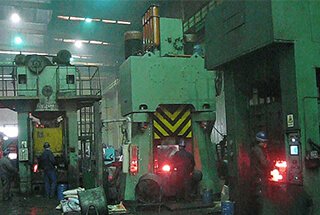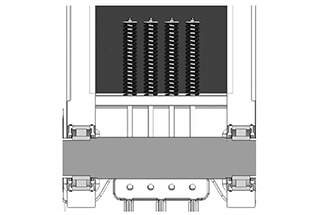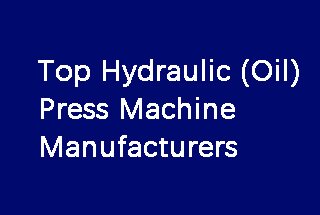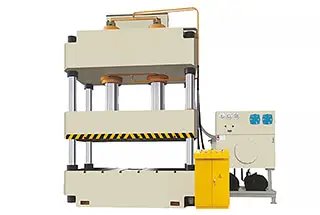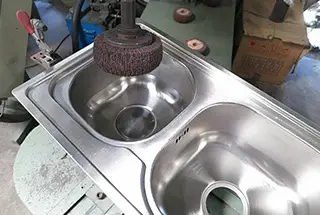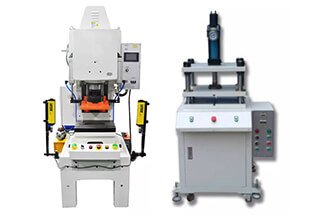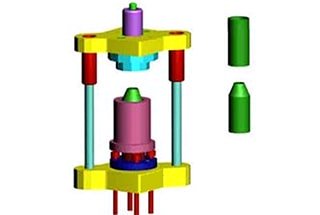
Have you ever considered how intricate designs on anti-theft doors are crafted? This article explores the advanced hydraulic press technology behind embossing these doors. You’ll learn about the challenges of conventional presses and the innovative solutions that ensure precision and durability. Discover how a specialized hydraulic press with large tonnage and a compact table transforms simple metal sheets into detailed, secure door panels. Dive in to understand the mechanics, design improvements, and practical applications of this critical technology.
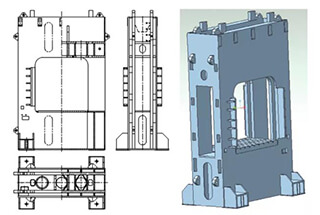
The main features of embossing forming of the anti-theft door are: large forming pressure and small table top.
At present, the main equipment for forming this part is the four column hydraulic press or split frame hydraulic press with conventional structure.
These devices mainly have the following problems in the application process:
(1) The precision of the four column hydraulic press is poor.
After long-term use, the precision of the equipment will deteriorate and cannot be adjusted and restored. For complex patterns with high precision requirements, they cannot meet the forming requirements;
(2) The split frame hydraulic press has high precision and precision retention, but for the working conditions with large nominal pressure and small table top, the oil cylinder with conventional structure cannot be arranged in the effective table top, so the hydraulic press table top needs to be added, resulting in poor stress on the sliding block and complex structure and high cost of equipment system.
The anti-theft door embossing forming hydraulic press introduced in this post is a new hydraulic press structure specially designed for the working conditions of large tonnage and small table.
It can effectively solve the shortcomings of conventional four-post structure and split frame structure in the application of anti-theft door embossing forming.
At the same time, it has the advantages of high precision and good precision retention.
The embossing forming of anti-theft door is used for the front and rear plates of anti-theft door, which is mainly used to increase the anti-theft strength and aesthetics of the door (Fig. 1).

Fig. 1 Schematic diagram of flower shape of anti-theft door
Part overall dimension (length) × width) is 2200mm × 520mm, the material is ordinary carbon steel, and the plate thickness is 0.4 ~ 0.8mm.
Overall dimension (length) of forming die × width) is about 2400mm × 1450mm, part thickness is 5 ~ 25mm.
The forming force varies according to the complexity of the pattern, generally 20000 ~ 30000kN.
The die structure is shown in Fig. 2.

Fig. 2 Schematic diagram of embossing forming die
During production, the blank holder first presses the periphery of the part and forms the required pattern through the upper and lower die cores.
The forming process has high requirements for the accuracy of the equipment. When the accuracy is poor, the parts are prone to cracks, eccentric flowers, wave breaking lines, uneven plate surface and other defects.
The body structure adopts the laminated plate overall frame structure.
The laminated plate structure is the superposition of independent steel plates, which can effectively release the internal stress generated during the operation of the hydraulic press (Fig. 3);

Fig. 3 Structural diagram
At the same time, in order to strengthen the overall strength and stiffness of the fuselage, the laminated plates are connected into a box structure by welding (Fig. 4).

Fig. 4 Schematic diagram of body structure
This structure has the dual advantages of laminated plate structure and box structure.
According to the structural characteristics of large tonnage and small table hydraulic press, the cylinder structure is adopted.
The conventional hydraulic press is that the cylinder block is fixed on the upper beam, and the sliding block is driven by the movement of the piston or plunger to realize the nominal pressure.
The cylinder dynamic structure is to fix the piston on the lower plane of the upper beam of the hydraulic press, combine the cylinder block and the slider into one, and drive the slider through the cylinder block to realize the nominal pressure of the hydraulic press, as shown in Figure 5.

Fig. 5 Schematic diagram of cylinder dynamic structure
The advantage of the improved scheme is that the structure is compact so that the pressure of large tonnage can be realized in a small table.
Due to the small table surface of the hydraulic press, the piston cylinders are used on both sides in the design, and the main tonnage is realized together with the intermediate cylinder during pressing.
At the same time, it is used as the return cylinder during the return of the slider.
The main tonnage of the hydraulic press is realized by three oil cylinders.
The large tonnage plunger cylinder in the middle adopts the cylinder dynamic structure.
The cylinder block and the sliding block form a closed box structure by welding (Fig. 6).

Fig. 6 Structure of cylinder sliding block
The plunger rod is fixed on the lower plane of the upper beam, and an oil hole is set in the middle of the plunger to realize oil inlet in the cylinder.
There are two small piston cylinders of equal tonnage on both sides, which can realize the pressing and return functions of the slider.
The installation mode of the two small piston cylinders is the conventional installation mode, that is, the cylinder block is fixed on the beam part of the fuselage, and the piston rod drives the sliding block for pressing and return movement.
The arrangement structure of this kind of oil cylinder is compact, and the minimum table size of hydraulic press with nominal pressure of 30000kN can be 2600mm × 1500mm.
In recent years, with the improvement of the diversity of anti-theft door forms, its patterns are becoming more and more complex, and the requirements for the accuracy of equipment and molds are becoming higher and higher.
The slide guide of anti-theft door embossing hydraulic press adopts X-shaped inclined wedge adjustable guide rail (Fig. 7), which has high guiding accuracy, strong adjustability and precision retention.

Fig. 7 Slider guide structure
The guide plate on the sliding block is made of copper-base alloy material, which has good accuracy retention.
The guide rail plate on the body adopts 42CrMo, which has good wear resistance after special heat treatment.
At the same time, in order to enhance the operation accuracy of the slider, the guide length of the main plunger cylinder is lengthened, so that the operation accuracy of the main cylinder itself can be improved.
In order to improve the design quality, the structural hydraulic press adopts three-dimensional modeling finite element analysis in the design stage to conduct detailed analysis and demonstration on the strength, stiffness and stress of the fuselage and key parts of the slider (Fig. 8 and Fig. 9).
The design scheme is optimized according to the analysis results.

Fig. 8 Finite element analysis of body

Fig. 9 Finite element analysis of slider
This type of equipment has been running stably at the user (Fig. 10 and Fig. 11), with reliable performance and high precision, and can meet the embossing forming of anti-theft door with various complex patterns.
The cost of this structural equipment is 30% lower than that of the conventional frame hydraulic press, and the accuracy can reach the accuracy of the conventional frame hydraulic press.
The accuracy adjustment is convenient, stable and reliable.

Fig. 10 Practical application of equipment

Fig. 11 Formed parts
The research and development of the structural equipment provide convenience for the popularization and application of the embossing forming process of the anti-theft door, and provides a reliable solution for the design of large tonnage and small table equipment.

